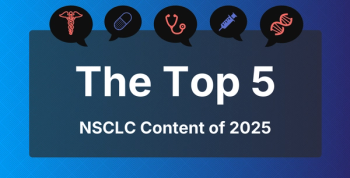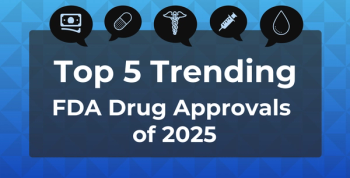
Dr Mark Fendrick on Indication-Based Drug Pricing in Cancer Care
The fact that you have certain drugs that treat numerous cancers, and that they may treat 1 cancer different or better than another, would suggest that we should probably have differential pricing models, said A. Mark Fendrick, MD, director of the Center for Value-Based Insurance Design at the University of Michigan.
The fact that you have certain drugs that treat numerous cancers, and that they may treat 1 cancer different or better than another, would suggest that we should probably have differential pricing models, said A. Mark Fendrick, MD, director of the Center for Value-Based Insurance Design at the University of Michigan.
Transcript (slightly modified)
The issue of indication-based pricing is 1 response to tremendous pressure about what we’re doing with cost for drugs, particularly in cancer. So, we want to try to get to a situation where we’re actually paying appropriate amounts for drugs that work well. It’s not unique to cancer, but the fact that you have certain drugs that treat numerous cancers, and that it may treat 1 cancer different or better than another, would suggest that we should probably have differential pricing models. So, we’ve advocated for indication-based pricings for drugs for quite some time, only based on really hard, clinical evidence. I think, while it’s very complicated and understanding it might be difficult to move forward, but if people can understand that there are many parameters that you determine a value-based price or an indication-based price. The 3 that come to the top of my mind for me are:
- First is the severity of the condition, so cancer tends to be a higher, say then toe fungus or allergies.
- Second is how well the drug actually works, so does it completely cure you, does it slow the progression, or does it only treat your symptoms.
- The last, which makes this indication-based pricing so complicated in my eyes, is actually if they’re alternative therapies. So, if there’s obviously alternative therapies that are less expensive, then you can argue for a lower indication-based price.
If you put just those 3 variables together, you understand that now you have a Rubik’s cube, making it so hard, as opposed as 1 price for everything. Now we’re saying we might price it based on what you’re using it for, how well it works, and whether there are alternatives, which is why we would say don’t move ahead with indication-based pricing, or value-based pricing, but understand that there are a lot of variables that need to be considered before we go too far or too fast.
Newsletter
Stay ahead of policy, cost, and value—subscribe to AJMC for expert insights at the intersection of clinical care and health economics.







































